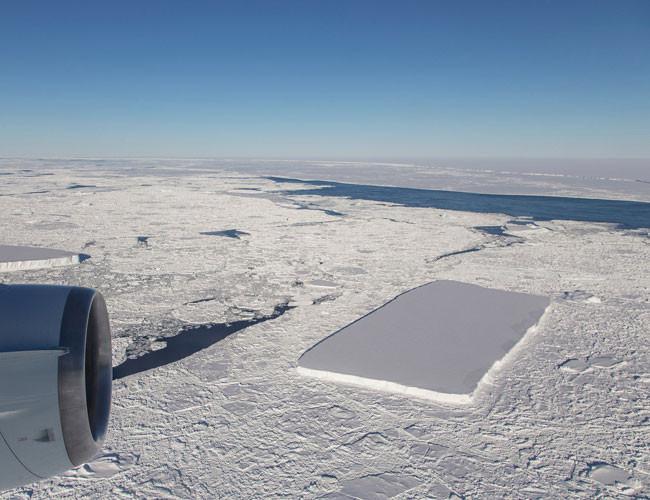'Stable' East Antarctica glaciers melt
WASHINGTON

A sharp-angled, tabular iceberg floats among sea ice just off of the Larsen C ice shelf in the northern Antarctic Peninsula. Picture taken on Oct. 16. (NASA / Jeremy Harbeck)
Four rivers of ice are shrinking in the eastern part of the frozen continent Antarctica that’s supposed to be stable, NASA announced on Dec. 10.
The region has long been considered unaffected by some of the more dramatic changes occurring elsewhere on the continent. But satellites have now shown that ice streams running into the ocean along one-eighth of the eastern coastline have thinned and sped up.
Four small glaciers in a region known as Vincennes Bay are thinning at surprisingly fast rates, researchers reported at a meeting of the American Geophysical Union in Washington D.C.
Previously, scientists had been aware that the region’s Totten Glacier was experiencing melting. Pretty much everything else in that part of the continent was considered stagnant, however.
The new satellite elevation and velocity maps change this view. They make it clear that nearby glaciers to Totten are also starting to respond in a similar way.
If this trend continues, it has consequences for future sea levels. There is enough ice in the drainage basins in this sector of Antarctica to raise the height of the global oceans by 28meters - if it were all to melt out.
“That’s the water equivalent to four Greenlands of ice,” said Catherine Walker from NASA’s Goddard Space Flight Center in Greenbelt, Maryland, who led the team analyzing the glaciers.
The glaciers are responding to warm ocean waters that now reach much closer to East Antarctica’s icy edge than in years past — and might continue to do so. “It’s a signal of what’s to come,” says Walker.
















